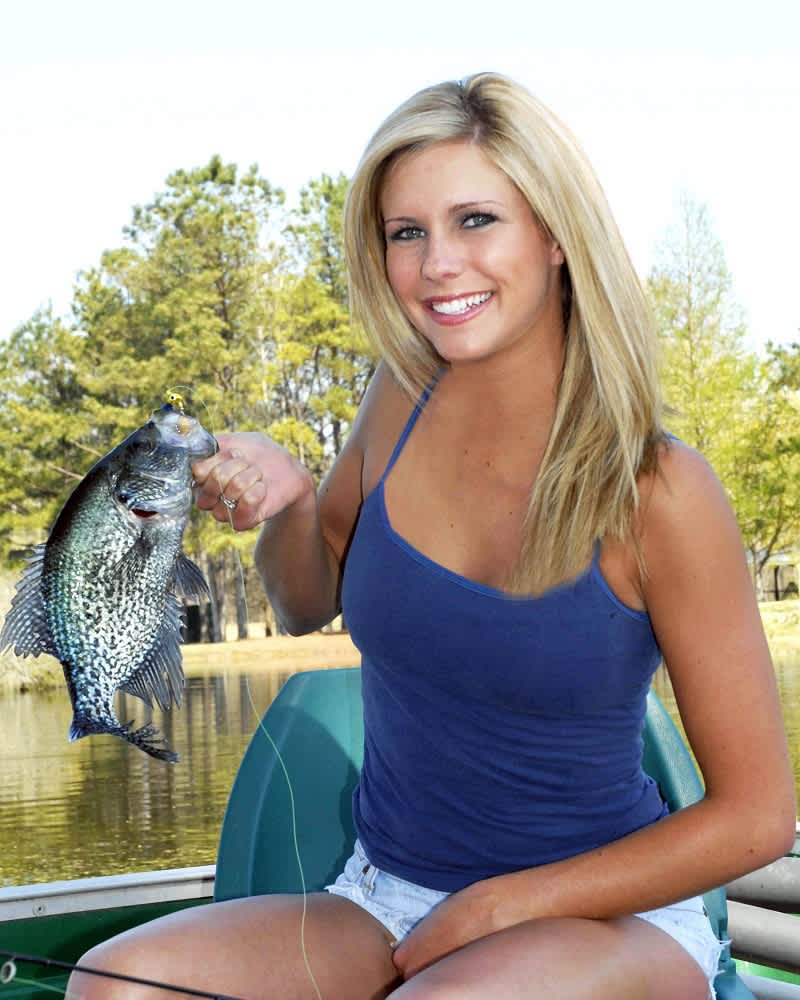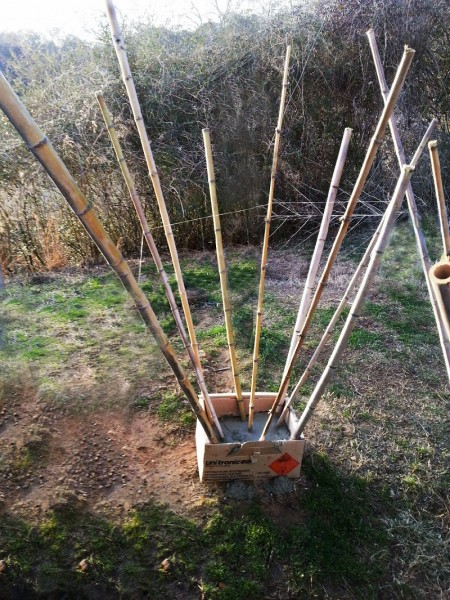Plant Now to Harvest Year-round Crappie
John E. Phillips 05.21.15

Longtime crappie guide Steve McCadams of Tennessee says he puts out a combination of several different types of brush shelter—both willows and river birch—for crappie each year.
“Occasionally, I’ll put out other types of treetops,” he told me. “I like these two types of treetops for building brush shelters for crappie, because I usually can get my hooks out of these treetops easier than with other types of trees. A lot of people sink cedar trees, and cedar trees are better than no cover. However, I’ve found that cedar trees are much more difficult to get hooks out of than willow or river birch.”
One of the places that most people completely overlook when building brush shelters for crappie is to build that crappie habitat where it’s isolated cover with no other type of crappie attractant close to it. If crappie are cruising across a flat, swimming down the edge of a creek channel or a ledge, or moving down a bank with no cover, if you set up a brush shelter in these kinds of places, you give that crappie a home where it can live for a day, a week, a month, or several times during the year.
Most often in the summer months, the crappie will be found on deep underwater structure. In the fall when you locate schools of shad, you’ll usually find crappie. In the spring, look for underwater treetops. You generally won’t be able to see the big crappie in the treetops from the surface. More than likely, the bigger crappie will be holding on treetops under the water.
River-bottom cane shelters
More people are beginning to sink brush tops in different depths of water to hold crappie. According to Jonathan Phillips of Alabama, a tournament crappie fisherman, “I build brush shelters to sink bamboo. Bamboo cane is what we call river bottom cane. There always seems to be plenty of it on any major river system. One big advantage in using cane to make crappie hot spots is the materials aren’t messy. Cane has long vertical structure, and these kinds of brush piles are easy to build.
“I’ll use two methods. For one, I’ll find discarded plastic flower and tree pots. Often stores like Lowe’s will have a recycling program for these kinds of pots. People who want to get rid of these pots can return them to the store and put them in a specific area. People who want to get pots can do that for free. I’ll put a bundle of cane in one of those pots in some QUIKRETE (quick-drying concrete). This way, I have my anchor and my brush all in a nice flower pot that I can sink.
“[For the other], put three small bundles of river bottom cane in the three holes of a cinder block, place the cinder block on a piece of plywood, fill up the holes in the cinder block with QUIKRETE, let it set for a couple of hours or a couple of days and have a fish attractor I can drop in the water.”
Planting for crappie like this is easy, inexpensive, and simple to deploy. If there’s not a lot of current in the places where you sink these brush shelters, they’ll stay in place for a long time. Because the cane doesn’t have limbs coming off from it, you easily can fish vertically around the cane with a single pole without getting hung. Phillips mentions that although Christmas trees will hold numbers of crappie, these bamboo fish attractors can hold just as many fish, if you sink several cinder blocks or flower pots with the cane in them in the same area.
“I like to sink my cane to attract crappie in several different depths of water to have brush shelters to fish all year long,” Phillips said. “If I sink my brush in 15 to 18 foot of water, I’ve learned that I can catch crappie off that brush almost all year. Here’s why: some of the cane will stand up off the bottom six to 12 feet high, which means the crappie can hold on that structure from the bottom at 15 to 18 feet all the way up to five feet below the surface. So, even during the summertime or the cold winter months, the crappie have structure where they can hold. During the prespawn and the postspawn, they can hold in the middle of the cane. In the fall, as the water cools down, or in the early spring as the water warms up, they can hold higher up on the cane. This type of sunken structure is perfect for single pole fishing, whether you’re fishing with minnows or tight-lining with jigs. Using cane brush shelters, you won’t get hung nearly as often as when you use trees with branches, and you’ll catch as many crappie if not more than people who sink Christmas trees.”
Crappie mats
Another avid crappie fisherman, David Spain, also from Alabama, plants cane for crappie too but uses a somewhat different idea than Phillips. “I use river cane, cardboard boxes and QUIKRETE to make crappie mats,” Spain reported.
Spain collects cardboard boxes about 18 inches square, cuts river bottom cane to a length of 4 feet and puts a three- to a four-inch screw in the bottom of each cane, so about a half-inch of the screw is sticking out either side of the cane to hold the cane in the concrete. Next Spain fills his cardboard box up with QUIKRETE and places 10 to 12 pieces of river bottom cane in each box. The cane will stand straight up, although some of the cane may lean out at a slight angle.
“If you can’t get the cane to stand up straight in the concrete, you can run a small piece of thin wire all the way around the cane to help the cane stand up straight until the concrete sets,” Spain added.
Spain lets the concrete sit for a day or two and then sinks these crappie mats in about seven feet of water.
“I want to have at least three feet of water over the top of the cane, so it can’t be spotted,” Spain said.
Spain has learned that cane will last underwater much longer than wooden stakes or treetops. Because the bases of these mats are so heavy, floods and fast currents won’t move them. Spain can fish with a jig and cork tactic or cast and retrieve his jig without a cork, and his hooks won’t get hung, since the cane is round. The hooks will slide right off the cane. Spain has about 25 of these cane mats submerged on rivers where he fishes. Often he’s caught crappie within six weeks of putting out these type of mats.
To receive for free the Crappie Catchers’ Cookbook, by John and Denise Phillips that offers free recipes, go to http://johninthewild.com/free-books.


